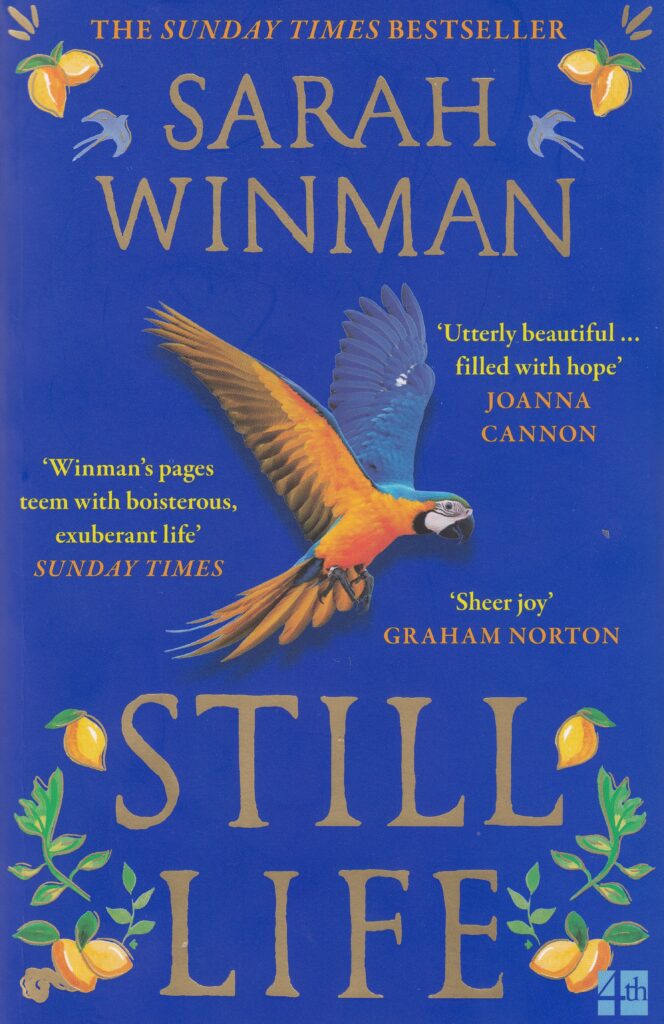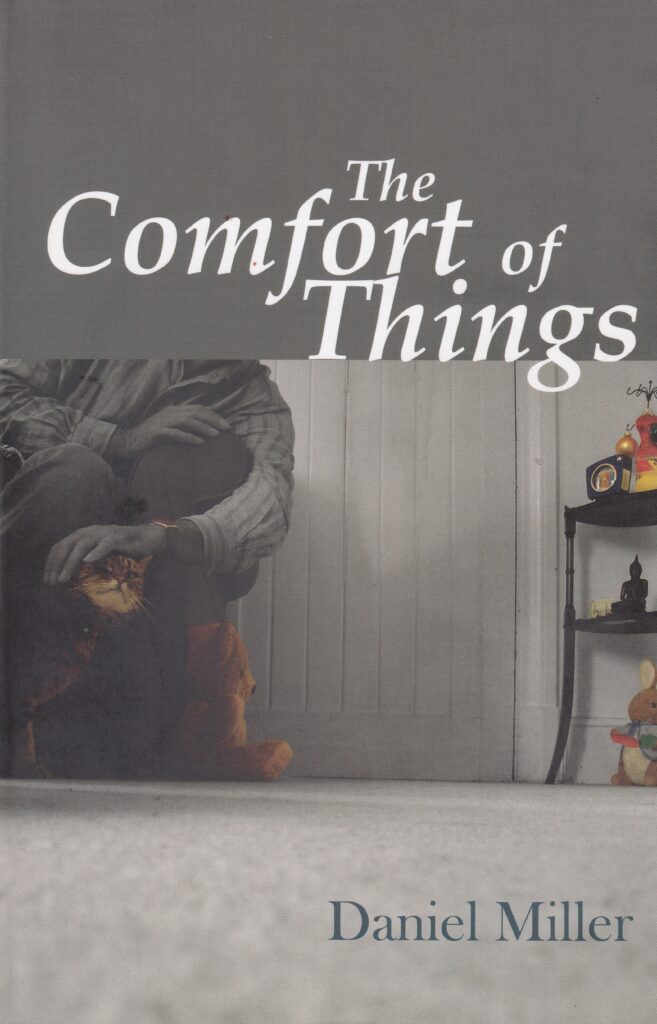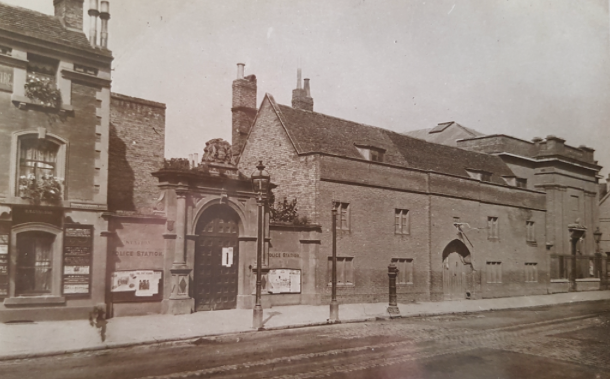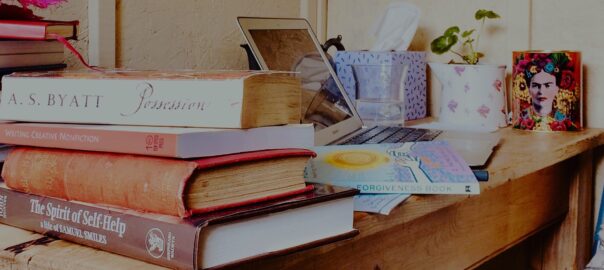The singer Peg Temper, in Sarah Winman’s beautifully crafted novel ‘Still Life’, sang for her life, and for yours too, ‘Because the world never turned out the way you wanted it to. It simply turned. And you hung on.’
Are you hanging on?
I hope so.
This evocative novel may well be just what the doctor ordered for these troubled times. If you’re fortunate enough to be reading it in a safe and secure space, then I hope that you will, like me, appreciate the privilege of being able to lose yourself in Winman’s intimate and, at times, comedic and uplifting tale of friendship and love.
I’m reminded of a 1939 Heffers of Cambridge advertisement featured in my history of the famous Cambridge bookseller, ‘This Book is about Heffers’ (2016).
At the time The Cambridge Review Commentator wrote,
‘Fortunately, most of us still preserve sufficient presence of mind to be able occasionally to leave war-thoughts behind and turn to our bookshelves. At the bookshops War and Peace has been in great demand from those “who have always been meaning to tackle it and have never before found the time.” At such period as this there is comfort in length. One desires a really substantial world into which to escape.’
‘Still Life’ is set mostly in quintessential post-war Florence. There’s art history and an appearance by the young Morgan Forster and his mother, to boot.

A minor insurrection
And now? We find ourselves at perhaps the most dangerous moment in history since the Cuban Missile Crisis of 1962. It’s a worrying time.
I may have been born the year before that frightening episode, but my upbringing was strictly non-political, to such an extent that mother and father strongly expressed their concern about me becoming ‘politicised’ when I attended university in 1980.
Having joined Women’s Aid and CND as an undergraduate, I finally found the courage of my convictions and became a full-time volunteer for the Cambridge Women’s Refuge; still unapproved and despite being told I’d be disowned if I became a social worker. Then, as a postgraduate student in Sheffield, I was an active supporter of the Miner’s Strike, which infuriated mother who accused me and my ‘miner friends’ of blowing up Margaret Thatcher and her colleagues at the Grand Hotel in Brighton in 1984.
The need for parental approval remains strong and in 2019, aged 58, when joining an Extinction Rebellion protest at a petrol station near my parents’ home, I was very apprehensive about the possibility of being spotted by father.
Earlier this month, at a Louth U3a book club session, we got onto the topic of protesting, and I was delighted to hear that my new friends had been involved in various protests over the decades, including the movement against the Vietnam War, and against the incarceration of Nelson Mandela in South Africa. We also talked about the 1984/5 Miner’s Strike, swapping stories of the impact of its policing, and the decimation of mining communities.
When I arrived home after that session, I picked up an email from the parents confirming their forthcoming trip to celebrate their diamond wedding anniversary. A stay at the Grand Hotel in Brighton.
Comfort in books and things
A more affirming aspect of my childhood was our weekly visit to Heffers Children’s Bookshop, and to the Central Library, then located upstairs at the Guildhall in Cambridge.
The writer Simone de Beauvoir viewed books – all books – as the most precious things in the world and dreamed of shutting herself away in the dusty avenues of her local circulating library. I like to think that de Beauvoir would have appreciated the way in which the Italian writer, Italo Calvino described the massing of written pages that can bind a room like the thickness of foliage in a dense wood, like stratifications of rock, slabs of slate, slivers of schist. When I look at my collection of biographies, I see reassuring layers of wisdom.
It isn’t just books, though. There is comfort to be found in all material things, as Daniel Miller discovered in his 2008 anthropological study of human values, feelings and experiences; a study that explores ways in which material culture helps people to deal with loss and change, and how the humanity of people is revealed by their material possessions. Miller observes in ‘The Comfort of Things’ that material objects are an integral and inseparable aspect of all relationships. He affirms the centrality of relationships to modern life, and the centrality of material culture to relationships.
The fabric of our lives is inter-woven with everyday objects. Miller cites the sociologist Pierre Bourdieu’s argument that our orientation to everyday objects is one of the main reasons why we accept as natural and unchallenged, the routines and expectations of life.
With her Bruegel-esque narrative, Sarah Winman gives us in ‘Still Life’ what Virginia Woolf would describe as a tale filled with, ‘people going about their daily affairs, toiling, failing, succeeding, eating, hating, loving, until they die’. For Winman, the power of still life lies precisely in triviality, in a world of reliability that is symbolised by objects representing ordinary life,
‘Within these forms something powerful is retained: continuity. Memory. Family.’
Cultural devotion and destruction
Unlike Miller and Bourdieu, I’m not attempting a rigorous science of society. While it was a pleasure to revisit my own copy of Bourdieu’s masterpiece, ‘The Rules of Art’ (1996 translation), I’m simply musing upon what Miller describes as the social cosmology that helps to determine the order of those things that shape my miniscule but holistic world. For example, when helping out this week at the Louth & District Hospice Charity Bookshop in what is now my hometown, I realised what the physical presence of books means to me. How vital they are to my existence. I venerate them.
But what if your bookshops, libraries – and homes – are being blown to pieces?
As he observed the terrible destruction of Ukrainian cities by Russian forces, Nick Poole, Chief Executive of the Chartered Institute of Library & Information Professionals, wrote a piece on protecting libraries and archives in Ukraine,
‘You disrupt and destabilise a people by disrupting their sense of self – their language, their literature, their culture.’
We know that war can destroy culture.
It’s an appalling tragedy. Hopefully, when the fighting finally stops, the Ukrainian people (those who have survived) can reclaim their homeland. And hopefully, they will, like the Italians in Sarah Winman’s magnificent novel, be able to recover many of those precious antiquities and books that define their humanity. For, as the art historian Evelyn Skinner in ‘Still Life’ declares,











